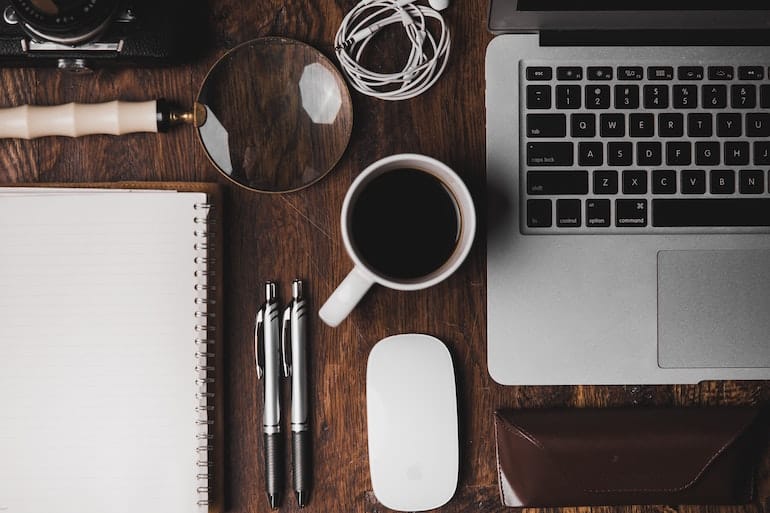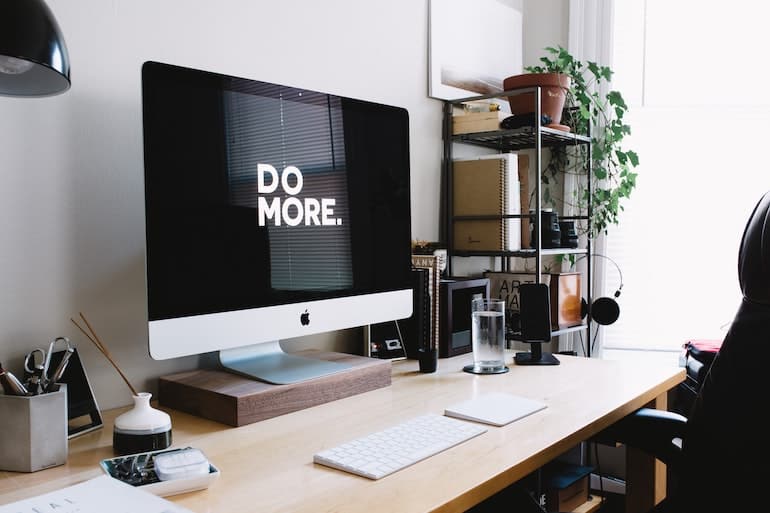Multi-tasking is hurting your productivity, which is why experts recommend monotasking—or focusing on one singular task at a time—to achieve a flow state. Your flow state is the mental state where you’re most creative and efficient. Monotasking requires practice and patience, but by eliminating distractions, building a habit, and starting small, you can achieve it. See everything you need to know about monotasking and getting into your flow state, below.
Are you reading this in the middle of a meeting, while eating your lunch, or while simultaneously watching a TV show? For many of us, multitasking feels like a part of our DNA. It’s ingrained in our belief systems around work and productivity. And while it seems like a solution to getting everything done on a packed to-do list, doing multiple things at once actually robs us of our productivity. What’s more, it makes it nearly impossible to enter a flow state. Find out more about the benefits of flow state and how monotasking can help, below.
What is Flow State?

“Flow state is that optimal state of focus and concentration where you’re able to be fully present in the task at hand and achieve peak performance,” says Heather Wilson LCSW, LCADC, CCTP, the Executive Director at Epiphany Wellness. “When you’re in a flow state, you’re completely absorbed in what you’re doing,” she adds, explaining how this allows you to work more efficiently and complete tasks in a quality manner.
“What people often refer to as ‘flow’ is simply a state of hyper-focus,” explains April Dávila, a mindfulness meditation instructor, certified by the Greater Good Science Center at the University of California at Berkeley. “Distractions fall away, time seems to warp, and ideas float up seemingly out of nowhere,” she adds. This state isn’t magic, it’s scientific. According to research, getting into the flow is directly connected to productivity. (In fact, it is our most productive state.)
Examples of Flow State
Flow state can happen during many types of activities, including:
- Working out
- Reading a good book
- Playing a game
- Doing a hobby
- Cleaning
- Playing an instrument
- Writing
- Doing any kind of work
That said, getting into that state of mind can be challenging for some—especially those who tend to multitask. This is because multi-tasking is essentially the opposite of flow state, making it harder to be productive (and efficient) and less mindful, creating plenty of room for mistakes and heightening stress levels.
So how can you get into the flow state to unlock productivity and creativity? Break your multitasking habit and try monotasking instead.
How Multitasking Impacts the Flow State
In a way, multitasking is always looming over the flow state’s shoulder, waiting to take over. Many of us can’t help it—it’s just the way we were taught to operate based on social norms and belief systems. But even just having awareness of its presence and the effects it has on the flow state is a stepping stone to warding off the urge to multitask. “When we’re in a flow state and we decide to start working on something else and multitask, we can lose the concentrated mindset we worked so hard to get into,” Wilson explains. “This can be detrimental to our productivity because it takes time and energy to get back into the flow state,” she adds.
Additionally, multitasking is very distracting, which wreaks havoc on productivity and keeps many of us from completing tasks or even doing quality work as distractions can contribute to mishaps. “When you multitask, your attention is divided into the many different tasks you do at a given time,” says Dr. Sony Sherpa, a holistic physician, and contributor at Nature’s Rise. “This disrupts your focus and your brain is in a constant struggle to juggle the details of each task, going back and forth from one another,” she adds. Sherpa also says that this type of nonstop quick switching—which even computers can’t really do that well—makes it impossible for you to get in the zone.
How Monotasking Can Help You Reach Flow State

Without practice, tuning into the flow mind can be a challenge. One way to start is to focus on a singular task—kind of like a mental way of putting one foot in front of the other.
What is Monotasking?
As the name suggests, monotasking is the art of focusing on one task at a time and not introducing another task until the first one is complete. Think of monotasking as the anti-multitasking. It’s highly recommended not only for our well-being (living in a state of flow can be extremely beneficial) but also for productivity and producing quality work.
When we focus on one task at a time, we’re more likely to enter a flow state—which lends itself to better, faster work. “Concentrating on finishing one task at a time can be the key to checking off boxes on our to-do lists in a timely manner,” says Wilson.
Benefits of Monotasking
When we are in the zone while monotasking, we are able to feel a greater sense of accomplishment because we are actually fulfilling a task and not overwhelming ourselves with multiple to-do list items at a time. “This leads to a greater sense of well-being, positively affecting not just your mental health but also your physical wellness,” says Dr. Sherpa. Monotasking grounds us, keeping feelings of stress and anxiety (which can be detrimental to mental and physical health) at bay.
Monotasking in a flow state is also connected to creativity and learning, as it enhances your ability to keep learning. “It amplifies your ability to identify what is most important so you can focus on it and let your creative juices flow freely,” Dr. Sherpa explains. And, of course, monotasking results in better productivity and higher output. This occurs because the “flow state allows you to focus on a single task without clouding your mind with stress and worry,” says Dr. Sherpa.
“When being in the flow is practiced and cultivated, you can easily merge your actions and your state of awareness,” says Sam Nabil, a Licensed Professional Counselor, and CEO and Lead Therapist of Naya Clinics. “As you get in the flow, you can feel that you’re completely involved in the task you have,” he adds, noting that this enhances performance, engagement, learning, creativity, and skill development. “In addition, the flow state is associated with increased happiness, better emotional regulation, and intrinsic motivation.”
How to Start Monotasking
Easier said than done, right? Getting in the flow of monotasking takes practice. Experts recommend these tips to help you get started.
- Start with Something your Love
If you’re having a hard time entering a flow state with work, Dr. Sherpa recommends practicing by doing something you love. “Getting in a flow state is easier when you do a task that you love,” she explains, adding that we tend to be more engaged in activities we love, so it’s easier to not only get in that state but stay in the state for longer.
- Create Awareness Around Multitasking
Knowing when you should continue to focus on one task until it’s completed can help train the mind away from multitasking, says Wilson. When your mind starts to drift and you’re tempted to scroll social media during a meeting, turn on a show while eating, or respond to emails at your kid’s soccer game, bring awareness to the mental drift. Remind yourself you’ll be better off completing the task at hand first.
- Build A Habit
According to Dr. Sherpa, one of the best ways to adopt this approach to productivity is to create a habit. “Create a sequence of actions that you do before you begin an activity that requires you to enter a state of focus,” she explains. “The idea is to let your brain know that you’re getting ready to accomplish a task,” she adds. This can be as simple as making yourself a cup of tea and then sitting down to work, taking a quick shower, or even moving your body with a little bit of yoga.
- Remove Distractions
Another way to get into the flow is to try and limit as many environmental distractions as possible—after all, the urge to multitask is distracting enough as it is. “Creating a calm environment with little to no distractions around makes it easy and natural to enter a state of flow,” Dr. Sherpa explains.
The Takeaway
Limiting your multitasking will help many of the actions you do feel meditative and mindful. But, just like meditation and mindfulness, it takes some practice to fight the urge of doing more than one thing at a time and entering that flow state of mind. Give yourself grace in breaking with your multitasking norms.



/assets/images/provider/photos/2672875.jpg)


More Stories
How to Use the Mindful Eating Hunger Scale
Is CBD Safe For Everyone?
50 Easy Whole30 Recipes · Seasonal Cravings